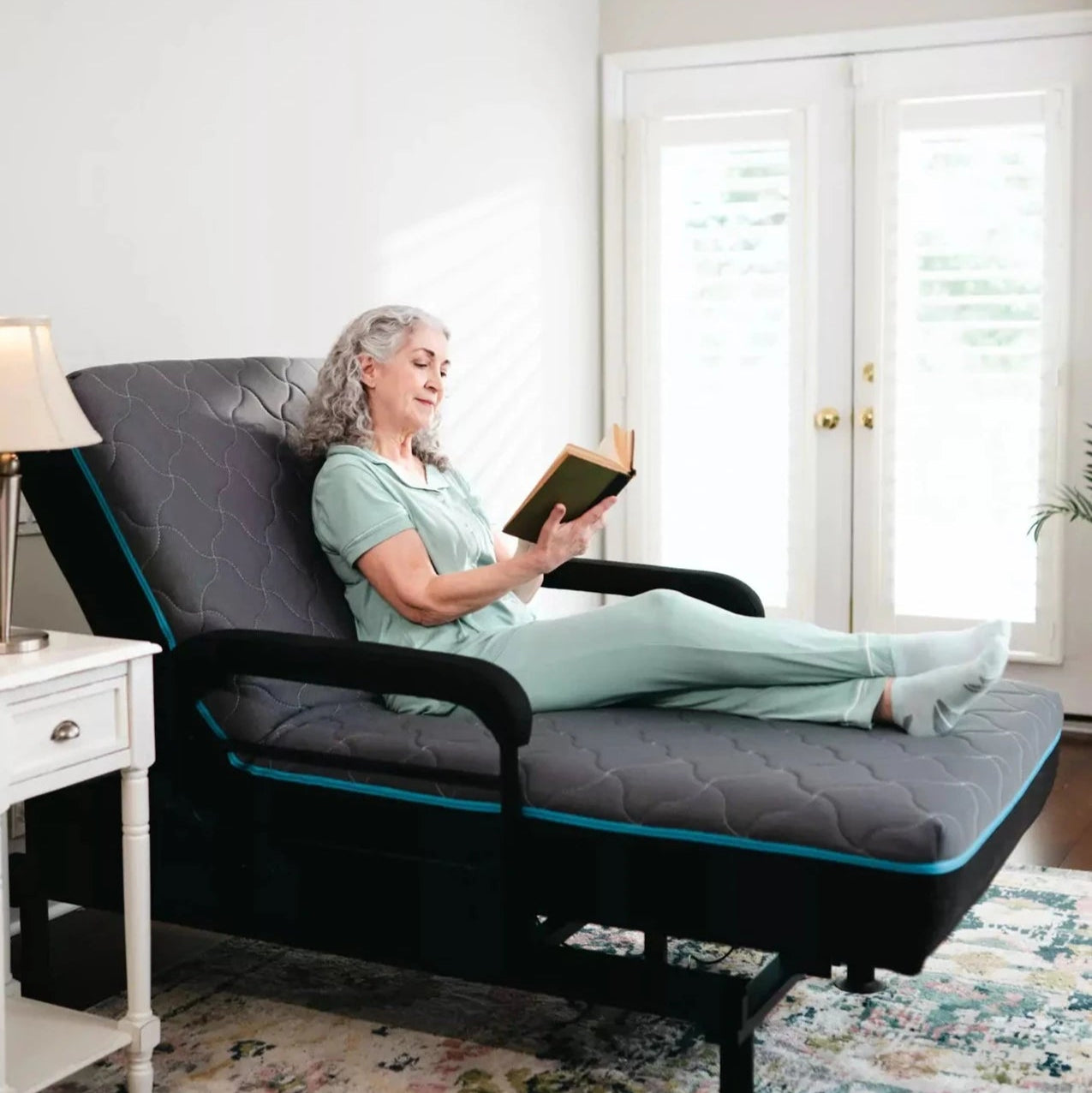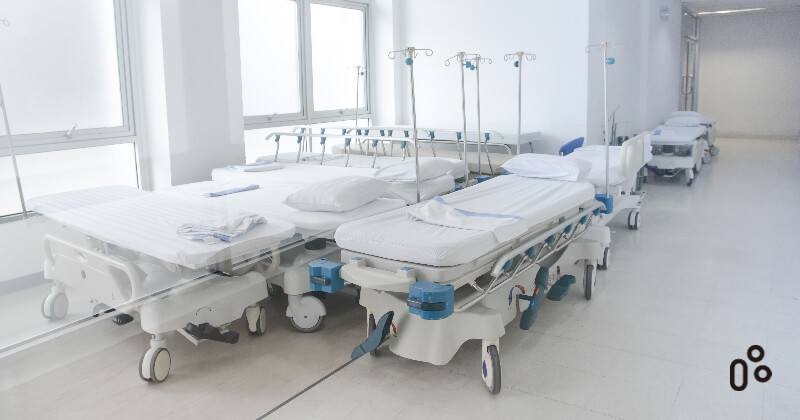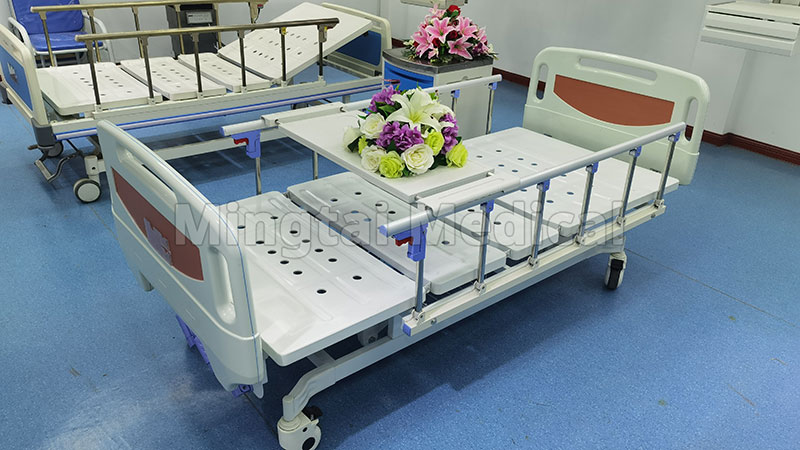6 Simple Techniques For Hospital Beds For Home Use
6 Simple Techniques For Hospital Beds For Home Use
Blog Article
The Main Principles Of Hospital Beds For Home Use
Table of ContentsThe Ultimate Guide To Hospital Beds For Home UseThe Single Strategy To Use For Hospital Beds For Home UseThe Definitive Guide for Hospital Beds For Home UseNot known Facts About Hospital Beds For Home UseSome Known Details About Hospital Beds For Home Use The Ultimate Guide To Hospital Beds For Home UseThe Ultimate Guide To Hospital Beds For Home Use
There are three primary sorts of health center beds: guidebook, semi-electric, and fully-electric. More kinds of medical beds exist and they are listed below. These beds utilize hand cranks to readjust the bed's elevation and increase and lower the head and the foot. Hand cranks are commonly located at the foot of the bed and need a person that is literally capable of operating.
Semi-electric beds have an electrical motor to elevate and reduce the head and foot portions of the bed (hospital beds for home use). Full-electric beds have an electric motor that can raise the head and foot sections of the bed as well as the entire elevation and positioning of the bed.
The 45-Second Trick For Hospital Beds For Home Use
There are a number of kinds of hospital beds, each developed to satisfy particular patient requirements. Right here are some typical types: This is the most usual type of health center bed, made for basic clinical usage.
Lower to the ground than a conventional bed. This kind of bed is created for larger clients, with a bigger structure and higher weight capacity than a typical bed. This sort of bed is made especially for children, with smaller sized dimensions than a standard bed. Unique functions such as complete length side rails and cartoon style.
This type of bed is created for critically ill patients that require open tracking and specialized medical devices such as ventilators and mixture pumps. This kind of bed is developed for use throughout labor and shipment, with flexible positions and attributes to support the mommy and infant during the birth procedure.
The Basic Principles Of Hospital Beds For Home Use
Multiple feature and the devices carry out increasing traction to different parts of the vertebra and the extremities without relocating the body. These are simply a few instances of the sorts of health center beds readily available. The particular kind of bed used will rely on the individual's condition, clinical requirements, and various other factors.
Right here is things you require to recognize. A one-function healthcare facility bed is a medical bed that enables a patient to relocate just the head or foot section up or down. A 2 function hospital bed commonly describes a kind of medical bed that has 2 flexible features to assist clients in healthcare facilities or treatment facilities.

More About Hospital Beds For Home Use
A 7-function ICU bed is a kind of medical bed that supplies numerous adjustable functions to sustain critically unwell patients in a critical care unit (ICU) (hospital beds for home use). The 7 functions commonly include: Backrest change: The backrest can be adapted to numerous angles to aid the patient stay up or relax pleasantly
Height change: The bed can be elevated or reduced to make it much easier for individuals to enter and out of bed, and for caretakers to give care. Trendelenburg position: The whole bed can be slanted to promote blood circulation and circulation in the body. Reverse Trendelenburg setting: The bed can also be slanted in the contrary instructions to promote blood flow and flow in the upper body.
While more affordable than electrical versions, these beds need exertion for adjustments. The major benefits of manual beds are their affordability and dependability, as they don't depend on electrical energy. Nonetheless, the need for hands-on initiative can be a restriction in scenarios where quick changes are necessary or where caretakers encounter physical difficulties.
Get This Report on Hospital Beds For Home Use
They are appropriate for individuals who require very little rearranging for click here to read comfort or medical demands. Semi-electric hospital beds use a balance of manual and electrical controls. The head and foot areas are typically changed with electrical controls, while the height is readjusted by hand. These beds provide an ideal center ground in between guidebook and completely electrical choices, using convenience of usage without the complete price of electric designs.
Semi-electric beds are well-suited for people who need modest adjustments to the head and foot sections however can manage without frequent elevation changes. This makes them an affordable service for those looking for convenience and comfort without the demand for consistent repositioning. Totally electric health center beds feature electric controls for smooth changes to the elevation, head, and foot sections.
Specialty health center beds, such as ICU beds, lasting treatment beds, and bariatric beds, are thoroughly designed to resolve certain clinical needs. These beds use tailored care for diverse patient groups, enhancing both end results and comfort. In the following sections, we will discover the primary kinds of specialty healthcare facility beds, detailing their certain benefits and applications.
With years of experience in manufacturing electric linear actuators - hospital beds for home use and close cooperation with the medical care sector, TiMOTION is well-positioned to provide reputable medical care options. Our vertically integrated company takes care of every step of the production procedure, from design to actuator setting his comment is here up, ensuring we provide remarkable worth and customized remedies customized to your specific needs
The Best Strategy To Use For Hospital Beds For Home Use

To learn more regarding incorporating these technologies into your items, call us today. More analysis:.
Data is sourced from the Medicare Price Report.

The Greatest Guide To Hospital Beds For Home Use
A hospital bed is a bed developed specifically for clinical purposes. It is not only a location for patients to rest, but also a platform for clinical procedures. Unlike ordinary home beds, hospital beds usually have flexible features, which can promote clinical personnel to make various adjustments according to the requirements of patients, such as altering the height, inclination, and support angle of the back and legs of the bed.
Report this page